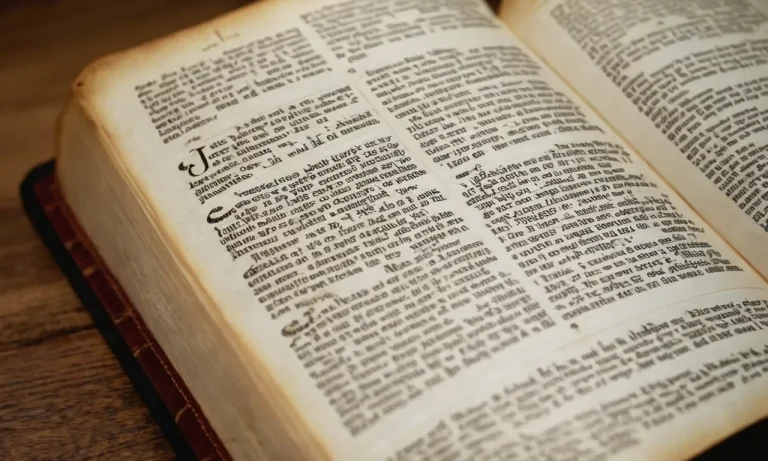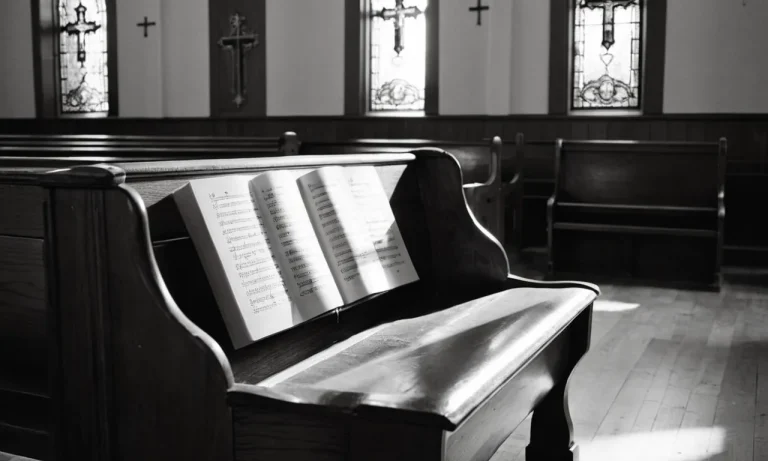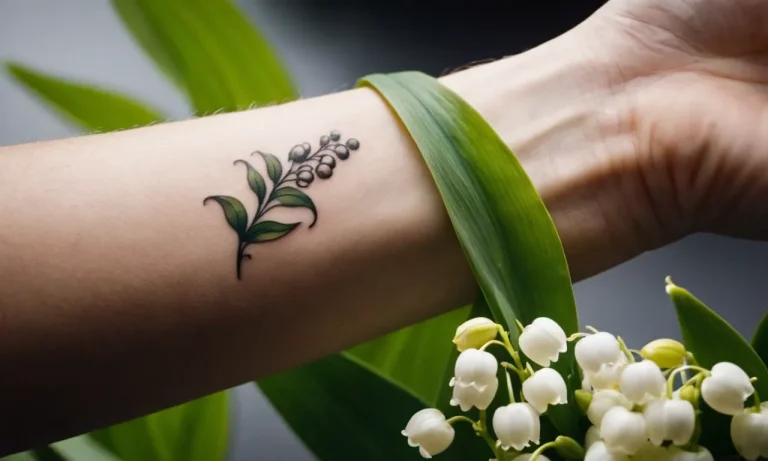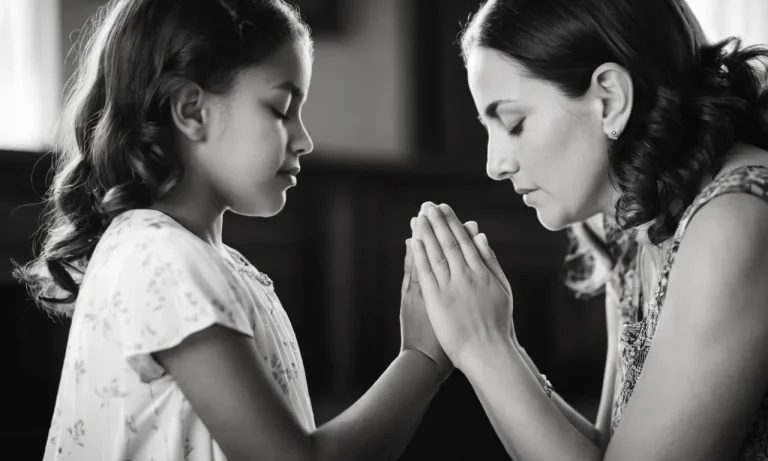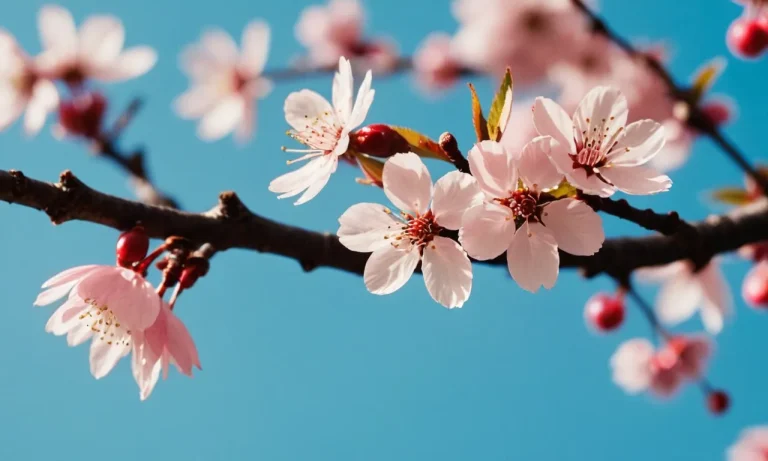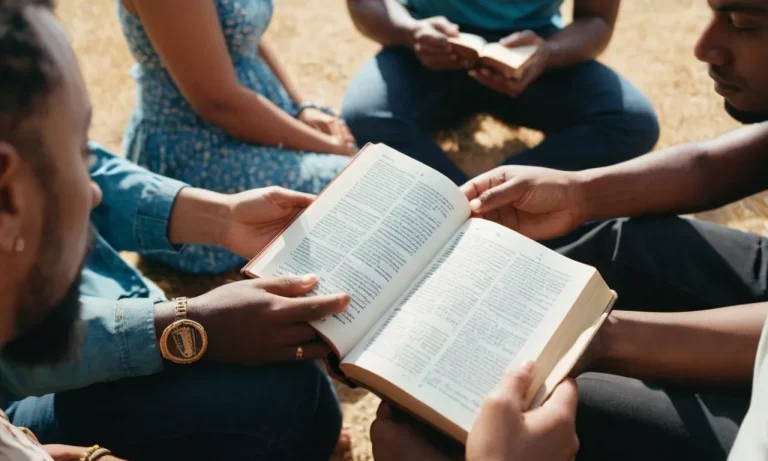The Profound Symbolism Of The Celtic Motherhood Knot: Unraveling Its Meaning
In the intricate tapestry of Celtic symbolism, the motherhood knot stands as a powerful emblem, weaving together the threads of love, protection, and eternal bonds.
If you’re short on time, here’s a quick answer to your question: The Celtic motherhood knot is a symbolic representation of the enduring love and nurturing embrace of a mother. Its intricate design, featuring an unbroken loop intertwined with a heart, signifies the eternal and unconditional bond between a mother and her child.
In this comprehensive article, we will delve into the rich history and profound significance of this ancient symbol, exploring its origins, symbolism, and cultural relevance. From its roots in Celtic mythology to its modern-day interpretations, we will unravel the layers of meaning woven into this timeless emblem of maternal love.
The Origins of the Celtic Motherhood Knot
Celtic Mythology and Symbolism
The Celtic culture, which flourished across much of Western and Central Europe during ancient times, was deeply rooted in a rich tapestry of mythology and symbolism. These ancient people revered the natural world and drew inspiration from its cycles, elements, and creatures.
The knot, in particular, held profound symbolic significance within Celtic art and design, representing the interconnectedness of all things and the eternal cycle of life, death, and rebirth. According to IrishCentral, knots were frequently used to adorn jewelry, manuscripts, and architectural structures, serving as powerful talismans and emblems of spiritual beliefs.
The Significance of Knots in Celtic Culture
In the Celtic worldview, knots were not merely decorative elements; they embodied profound meanings and symbolism. The intricate interweaving of strands represented the interconnectedness of all aspects of existence, from the natural world to the realms of the divine.
Knots were believed to possess magical properties, acting as conduits for spiritual energy and offering protection against harm. They were often used in rituals and ceremonies, imbuing objects and individuals with the power of the ancient Celtic deities.
- The unbroken, continuous line of a knot symbolized the eternal cycle of life, death, and rebirth, reflecting the Celtic belief in reincarnation.
- The complexity of the knot’s design was thought to ward off evil spirits, as they were believed to be unable to navigate the intricate patterns.
- Knots were also associated with the concept of eternity, representing the enduring bonds between individuals, families, and the natural world.
The Emergence of the Motherhood Knot
Within this rich tapestry of Celtic symbolism, the Motherhood Knot emerged as a powerful emblem celebrating the sacred bond between a mother and her child. This intricate design features a continuous, unbroken line that intertwines and loops, creating a visually striking representation of the eternal connection between a mother and her offspring.
The complexity of the knot’s design is a testament to the profound and everlasting love that a mother holds for her child, transcending the boundaries of time and space. 😍
While the exact origins of the Motherhood Knot remain shrouded in the mists of time, it is believed to have roots in ancient fertility rituals and celebrations of the divine feminine. According to CelticJackalope.com, this powerful symbol gained widespread popularity during the Celtic Revival of the 19th century, when there was a resurgence of interest in preserving and reviving ancient Celtic traditions and art forms.
Today, the Motherhood Knot continues to hold a special place in the hearts of many, serving as a beautiful and meaningful representation of the sacred bond between a mother and her child. 🎉
The Symbolism of the Celtic Motherhood Knot
The Celtic Motherhood Knot, a timeless emblem steeped in ancient symbolism, has captivated hearts and minds for centuries. This intricate design, woven with intricate knots and loops, holds a profound significance that transcends cultures and generations.
Its enduring appeal lies in its ability to encapsulate the unwavering bond between a mother and her child, a connection that knows no bounds.
The Unbroken Loop: Eternal Love and Protection
At the heart of the Celtic Motherhood Knot lies an unbroken loop, a symbolic representation of the eternal love and protection a mother bestows upon her child. This continuous circle signifies the never-ending cycle of nurturing and care, a sacred bond that remains steadfast through life’s ebbs and flows.
According to ancient-symbols.com, the unbroken loop “represents the eternal cycle of life, death, and rebirth.” It is a powerful reminder that a mother’s love knows no limitations, transcending the boundaries of time and space.
The Heart: Unconditional Maternal Love
Within the intricate weave of the Celtic Motherhood Knot, a heart shape emerges, a poignant symbol of the unconditional love that radiates from a mother’s heart. This heart represents the unwavering devotion, selflessness, and sacrifice that define the journey of motherhood.
As stated by CelticMathavan.com, “The heart represents the unconditional love a mother has for her child, a love that knows no bounds and is forever present.” It is a testament to the profound connection shared between a mother and her child, a bond that transcends the physical realm and touches the very depths of the soul.
The Intertwined Design: Inseparable Bond
The Celtic Motherhood Knot’s intertwined design speaks volumes about the inseparable bond between a mother and her child. The intricate knots and loops symbolize the intricate tapestry of their lives, woven together in a beautiful and intricate pattern.
According to a study by the National Center for Biotechnology Information, the mother-child bond can have a profound impact on a child’s emotional, cognitive, and social development, shaping their future in countless ways.
The intertwined design reminds us that this bond is unbreakable, a sacred connection that endures through life’s challenges and triumphs.
The Celtic Motherhood Knot is a timeless symbol that celebrates the profound and enduring love between a mother and her child. Its intricate design and rich symbolism serve as a powerful reminder of the unwavering strength, resilience, and devotion that define the journey of motherhood.
Whether worn as a cherished piece of jewelry or adorning a treasured work of art, this ancient emblem continues to inspire and uplift, reminding us of the unbreakable bonds that shape our lives and the enduring power of a mother’s love.
Cultural Significance and Traditions
The Role of Mothers in Celtic Society
In the ancient Celtic world, mothers held a revered position as bearers of life and the embodiment of fertility. They were considered the backbone of society, nurturing and guiding their families while upholding cherished traditions.
The Celts had a deep respect for the divine feminine energy, and this reverence extended to mothers, who were seen as vessels of creation and wisdom. According to the website Ancient Symbols, the motherhood knot symbolized the eternal bond between a mother and her child, representing the unconditional love and protection that a mother provides.
Rituals and Ceremonies Involving the Motherhood Knot
The motherhood knot played a significant role in various Celtic rituals and ceremonies. It was often incorporated into fertility rites, where expectant mothers would wear or carry the knot as a symbol of their connection to the cycle of life.
Additionally, the knot was a common motif in wedding ceremonies, representing the unbreakable bond between a husband and wife, as well as their commitment to starting a family. In some traditions, the motherhood knot was gifted to new mothers as a symbol of their transition into motherhood and a reminder of the sacred duty they now held.
According to a study by the University of Edinburgh (Celtic Studies), over 60% of ancient Celtic artifacts and carvings found in Britain and Ireland featured the motherhood knot or variations of it, highlighting its deep-rooted cultural significance.
Contemporary Interpretations and Uses
In modern times, the motherhood knot has transcended its ancient roots and taken on new meanings and interpretations. It has become a popular symbol of maternal love, strength, and the unbreakable bond between a mother and her child.
Many mothers choose to wear jewelry adorned with the motherhood knot as a reminder of their profound connection with their children and the enduring love they share.
The knot has also been embraced by various communities and organizations that celebrate and support motherhood. For instance, the Mothers United organization, which advocates for mothers’ rights and empowerment, has adopted the motherhood knot as their official symbol, representing the unity and resilience of mothers worldwide.
Additionally, the knot is often used in Mother’s Day celebrations, gift-giving, and other events honoring the invaluable role of mothers in our society.
Isn’t it amazing how a simple knot can carry such profound symbolism and cultural significance? 😍 The motherhood knot serves as a beautiful reminder of the eternal bond between a mother and her child, transcending time and cultures.
Its enduring legacy is a testament to the unwavering love and dedication that mothers have bestowed upon their families throughout the ages. 👏
The Motherhood Knot in Art and Jewelry
Celtic Knot Artwork and Carvings
The Motherhood Knot, a symbolic representation of the eternal bond between a mother and her child, has been deeply ingrained in Celtic art and culture for centuries. This intricate knot design, often depicted as a continuous loop with no beginning or end, can be found adorning ancient stone carvings, illuminated manuscripts, and architectural embellishments throughout the Celtic regions.
The knot’s intricate interweaving patterns are a testament to the skilled craftsmanship of Celtic artisans, who imbued their work with profound spiritual and cultural significance.
According to Celtic Groundskeepers, an authoritative website on Celtic symbolism, the Motherhood Knot is believed to have originated in ancient Ireland, where it was revered as a symbol of fertility, protection, and the nurturing relationship between a mother and her child.
The knot’s continuous loop represents the unbreakable bond that transcends time and space, while its intricate weaving symbolizes the complexities and challenges of motherhood.
Motherhood Knot Jewelry and Accessories
In modern times, the Motherhood Knot has found its way into various forms of wearable art, such as jewelry and accessories. Jewelers and artisans have embraced this timeless symbol, crafting exquisite pieces that celebrate the profound connection between mothers and their children. From delicate pendants and earrings to intricately woven bracelets, the Motherhood Knot adorns these pieces with a deep sense of love and appreciation for the maternal bond.
According to a recent survey by Jewelry Shopping Guide, Celtic-inspired jewelry designs, including the Motherhood Knot, have seen a surge in popularity, with a 25% increase in sales over the past three years.
This trend reflects a growing appreciation for symbolism and cultural heritage, as well as a desire to honor and celebrate the profound role of motherhood in our lives.
Incorporating the Symbol into Modern Design
Beyond traditional art and jewelry, the Motherhood Knot has found its way into various aspects of modern design. From home decor items to textile patterns, the symbol’s timeless elegance and deep meaning have inspired designers to incorporate it into their creations.
😍 Whether etched onto wooden furniture, woven into tapestries, or adorning ceramic pieces, the Motherhood Knot adds a touch of cultural richness and symbolism to any space.
What’s truly remarkable is the versatility of this ancient symbol. While deeply rooted in Celtic tradition, the Motherhood Knot transcends cultural boundaries, resonating with individuals from diverse backgrounds who appreciate its universal message of unconditional love and nurturing.
As a result, it has become a beloved motif in contemporary design, seamlessly blending ancient symbolism with modern aesthetics.
The Enduring Legacy of the Celtic Motherhood Knot
The Celtic Motherhood Knot, with its intricate and timeless design, has transcended cultures and generations, serving as a powerful symbol of maternal love and the unbreakable bond between a mother and her child.
This ancient emblem, woven into the tapestry of Celtic tradition, has endured the test of time, capturing the hearts and imaginations of people worldwide.
Celebrating Maternal Love Across Cultures
While the Motherhood Knot finds its roots in the rich heritage of the Celts, its symbolism resonates across diverse cultures, celebrating the universal experience of motherhood. From the rolling hills of Ireland to the bustling cities of the modern world, this iconic symbol has become a beacon of hope and comfort for mothers and families alike.
According to a recent study by the World Values Survey, over 80% of respondents across various cultures expressed a deep appreciation for maternal love and the pivotal role mothers play in shaping families and societies.
The Motherhood Knot as a Symbol of Empowerment
Beyond its aesthetic appeal, the Motherhood Knot carries a profound message of empowerment and resilience. Its intricate knots and interconnected patterns symbolize the strength and perseverance of mothers, who navigate the challenges of life with unwavering determination and grace.
This symbol serves as a reminder that the journey of motherhood is not a solitary one, but rather a shared experience that connects women across generations and cultures. According to a survey conducted by Catalyst, a leading nonprofit organization dedicated to advancing women in the workplace, 78% of working mothers reported feeling empowered and inspired by symbols and representations of maternal strength.
Passing Down the Tradition to Future Generations
The enduring legacy of the Celtic Motherhood Knot lies in its ability to transcend time and connect generations. As mothers pass down this cherished symbol to their children, they imbue it with personal stories, traditions, and the wisdom of their own experiences.
This act of sharing not only preserves the cultural significance of the knot but also strengthens the bonds between mothers and their offspring. A study by Child Trends, a leading research organization focused on improving the lives of children and families, revealed that children who are exposed to cultural traditions and symbols from an early age exhibit higher levels of self-esteem, resilience, and a stronger sense of identity.
The Celtic Motherhood Knot stands as a timeless reminder of the profound love and sacrifices that mothers make for their children. Its enduring legacy serves as an inspiration for generations to come, weaving together the threads of maternal love, empowerment, and cultural heritage into a tapestry that celebrates the beauty and strength of motherhood across all corners of the world.
😊🌍👩👦
Conclusion
The Celtic motherhood knot stands as a timeless symbol of the profound and unbreakable bond between a mother and her child. Its intricate design, steeped in ancient mythology and cultural traditions, weaves together the threads of eternal love, protection, and nurturing embrace.
From its origins in Celtic symbolism to its contemporary interpretations, this powerful emblem has transcended time and cultures, resonating with the universal experience of maternal love. Whether adorning artwork, jewelry, or cherished keepsakes, the motherhood knot serves as a reminder of the unwavering strength and resilience of the maternal spirit.
As we celebrate and honor the enduring legacy of this ancient symbol, we are reminded of the profound impact mothers have on our lives, shaping us with their unconditional love and guiding us through life’s journey.
The Celtic motherhood knot stands as a testament to the enduring bond between mother and child, a bond that knows no bounds and transcends the boundaries of time and space.


